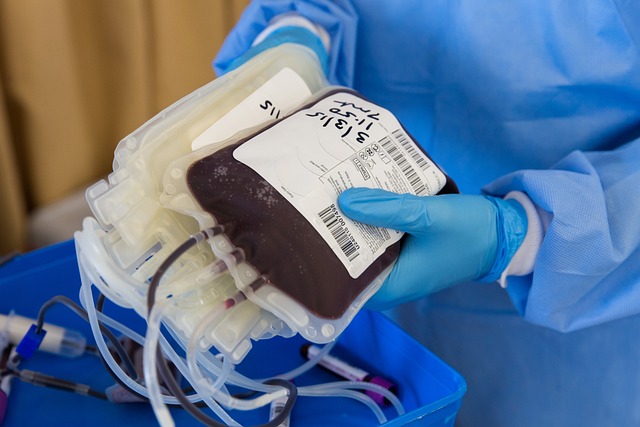Oregon's child welfare court system prioritizes protecting vulnerable children and finding them safe, permanent homes through a structured process. Key aspects include initial assessments, hearings presenting evidence, and orders detailing future plans. Court professionals collaborate with agencies to navigate complex cases, utilizing "court procedural insights" for holistic support. Social workers, attorneys, judges, therapists, doctors, and teachers work together to deliver optimal outcomes. The process emphasizes open communication, the child's best interests, and efficient resolution, with appeals available for parties dissatisfied with the outcome.
“Uncovering Oregon’s Child Welfare Court Process: A Comprehensive Guide offers critical insights into the state’s unique legal framework. This article delves into the intricate workings of the child welfare system, shedding light on key players and court procedures. From initial reports and investigations to hearings, decision-making, and appeals—we demystify each step. Understanding these court procedural insights is essential for parents, advocates, and professionals navigating Oregon’s child welfare courts, ensuring informed participation and optimal outcomes for involved children.”
- Understanding Oregon's Child Welfare Court System
- Key Players in the Child Welfare Case Process
- Initial Report and Investigation Procedures
- Court Hearings: Timeline and Expectations
- Decision-Making: Placement and Case Plan
- Appeals Process for Child Welfare Cases
Understanding Oregon's Child Welfare Court System

Oregon’s child welfare court system is designed to ensure the safety and well-being of vulnerable children while uniting families or finding permanent homes for those in need. Understanding the court procedural insights is crucial for all involved, from parents and guardians to social workers and attorneys. The process involves several stages, each with specific goals to resolve cases efficiently while prioritizing the child’s best interests.
Key components include initial assessments, hearing sessions where evidence is presented, and orders that outline the future plan for the child—whether it’s reunification, foster care, or adoption. Court professionals work collaboratively, leveraging resources and expertise from various agencies to navigate complex family situations. This holistic approach aims to provide a supportive environment, offering guidance and services to help families overcome challenges and make informed decisions regarding their children’s futures.
Key Players in the Child Welfare Case Process

In Oregon, several key players are involved in the child welfare case process, each with specific roles and responsibilities. These include social workers from the Department of Human Services (DHS), who are tasked with investigating reports of child abuse or neglect, assessing family situations, and developing plans to ensure children’s safety and well-being. They work closely with attorneys representing both the child and the parents or guardians, who navigate the court procedural insights to advocate for their clients’ rights and interests.
Judges play a crucial role in overseeing the case, making decisions based on evidence presented during hearings, and ensuring that all legal procedures are followed. They also collaborate with other professionals like therapists, doctors, and teachers to gather comprehensive information about the child’s needs and progress. This collaborative effort among various stakeholders is essential for delivering the best outcomes for children involved in the Oregon child welfare system.
Initial Report and Investigation Procedures

In Oregon, the child welfare court process begins with an initial report filed by a concerned individual or agency. This report details potential concerns regarding a child’s safety and well-being. Upon receipt, the court assigns a social worker to conduct a thorough investigation. The social worker interviews key individuals, including family members, caregivers, and professionals who interact with the child, gathering crucial information and evidence.
During this stage, the social worker assesses the home environment, reviews medical and school records, and determines if there are any immediate risks to the child’s safety. This court procedural insight is essential as it forms the basis for further decisions and ensures that all relevant factors are considered before any actions are taken regarding a child’s future welfare.
Court Hearings: Timeline and Expectations

Court hearings in Oregon’s child welfare system are structured with a clear timeline, offering insights into the court procedural steps involved. Following an initial petition, the process typically unfolds over several months, culminating in a final disposition hearing. During this period, both parties—typically parents and child protective services—have opportunities to present their cases, offering evidence and arguments before the judge.
Expectations for these hearings vary but generally include open communication between all involved, a focus on the child’s best interests, and a commitment to resolving the case in an efficient manner while ensuring fairness. The court procedural insights extend beyond timeline management; they encompass a comprehensive understanding of each party’s rights and responsibilities, fostering an environment where every effort is made to find a safe and permanent home for the involved child.
Decision-Making: Placement and Case Plan

After a child welfare case is opened, one of the primary goals becomes determining the best placement for the minor while also establishing a comprehensive case plan. This involves a series of court procedures designed to ensure the child’s safety and well-being. Decision-making in these situations often considers various factors such as the child’s current living environment, the parents’ or guardians’ ability to provide care, and any history of abuse or neglect.
The Oregon court system leverages these insights to facilitate informed decisions, aligning with the child’s best interests. A case plan typically outlines specific steps to achieve stability and permanency for the child. This might include services like counseling, parenting classes, substance abuse treatment, or foster care placement while working towards a goal of reunification or alternative permanent living arrangements. Regular court hearings monitor progress, assess compliance with the case plan, and adjust decisions as needed to ensure the child receives the support and environment they require for healthy development.
Appeals Process for Child Welfare Cases

In the event that either the child or the involved parents disagree with the outcome of their Oregon child welfare case, there is an appeals process in place to provide court procedural insights and a second chance at justice. Appeals must be filed within a specific timeframe, typically 30 days after the court’s decision, according to the Oregon Judicial Department. This process allows for a more thorough review of the evidence and legal arguments presented during the initial trial.
The appeals process involves submitting written briefs outlining the reasons for the appeal and identifying any errors in the lower court’s ruling. A panel of judges will then carefully examine the case, considering all new evidence and legal interpretations. If the appeal is successful, the case may be remanded back to the original court for further proceedings or a new trial, ensuring that both parties have an opportunity to present their cases more effectively within the established court procedural insights.
